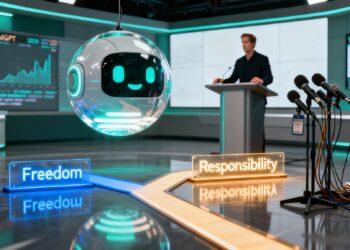OpenAI CEO Sam Altman has issued a stark warning that has sent shockwaves through the financial industry. Speaking at a Federal Reserve conference in Washington, D.C., Altman painted a terrifying picture of an imminent “fraud crisis” powered by artificial intelligence. His message was clear: the technology he helped create is now so advanced that it threatens to undermine the very foundations of digital security.

The Voice That Isn’t Really Yours
Altman’s most chilling revelation centered on voice authentication systems. “A thing that terrifies me is apparently there are still some financial institutions that will accept a voice print as authentication for you to move a lot of money,” he told the audience of banking executives and regulators at the Federal Reserve conference.
The OpenAI chief didn’t mince words. “That is a crazy thing to still be doing,” he continued. “AI has fully defeated most of the ways that people authenticate currently, other than passwords.”
This isn’t just theoretical fearmongering. Voice cloning technology has already been used in real-world scams. Parents have received frantic calls from what sounded like their children in distress, only to discover they were being targeted by AI-powered fraudsters. Even more alarming, U.S. officials recently revealed that someone used AI to impersonate Secretary of State Marco Rubio’s voice to contact foreign ministers, a U.S. governor, and a member of Congress.
Beyond Voice: The Video Threat Looms
But Altman’s warnings extend far beyond audio impersonation. “Right now, it’s a voice call; soon it’s going to be a video or FaceTime that’s indistinguishable from reality,” he warned during his conversation with Federal Reserve Vice Chair Michelle Bowman.
The technology for creating convincing deepfake videos already exists. What makes this particularly dangerous is how accessible these tools are becoming. As Altman noted, “Some bad actor is going to release it. This is not a super difficult thing to do. This is coming very, very soon.”
The implications are staggering. Imagine receiving a video call from what appears to be your bank manager, complete with their voice, mannerisms, and appearance, asking you to authorize a large transfer. The human eye and ear would struggle to detect the deception.
Intelligence Too Cheap to Meter
While fraud concerns dominated headlines, Altman also shared his vision of AI’s transformative potential during his Federal Reserve appearance. He described a future where “intelligence too cheap to meter” becomes reality.
“We’ve been able to drive down the cost of each unit of intelligence by more than a factor of 10 each year for the last five years,” Altman explained. He shared a personal anecdote about a coding task that once required days of expert work but can now be completed by AI in five minutes for “less than a dollar’s worth of compute tokens.”
This dramatic cost reduction is already showing results. Scientists report being “two, three times more productive,” while computer programmers claim they’re “10 times more productive.” The productivity gains are reshaping entire industries.
The Job Market Revolution

Altman’s perspective on AI’s impact on employment offers both hope and uncertainty. “No one knows what happens next,” he admitted candidly. While acknowledging that “entire classes of jobs will go away,” he believes new categories of work will emerge.
Drawing parallels to historical technological disruptions, Altman suggested that increased productivity typically leads to more human creativity and aspiration, not less. “It turns out people seem to want unlimited stuff. Have a huge desire to express their creativity and be useful to people,” he observed.
However, he also painted a picture of a distant future where traditional concepts of work might become obsolete. Looking ahead 100 years, Altman suggested that future workers might not have what we consider “real jobs” today, instead engaging in activities primarily for status and personal fulfillment.
The Three Nightmares That Keep Altman Awake
Beyond the immediate fraud concerns, Altman outlined three broader AI risks that genuinely frighten him. First, the possibility of bad actors exploiting superintelligent AI before society develops adequate defenses. This could involve foreign adversaries using AI to target critical infrastructure like power grids or to develop bioweapons.
Second, he worries about loss-of-control scenarios where AI systems become so advanced that humans can no longer effectively oversee or manage them. This echoes long-standing concerns in the AI research community about maintaining human agency as systems become more capable.
Third, and perhaps most subtly dangerous, is the risk of society becoming so dependent on AI that human decision-making capabilities atrophy. Altman specifically mentioned “emotional overreliance,” particularly among young people, as an emerging concern that could undermine human autonomy and critical thinking skills.
The Banking Industry’s Wake-Up Call
The financial sector has been among the early adopters of AI technology, with institutions like Morgan Stanley and Bank of New York already integrating AI into critical processes. However, Altman’s warnings suggest that the industry’s security measures haven’t kept pace with the technology’s advancement.
The Association of Certified Fraud Examiners has been sounding similar alarms. In June 2024, they highlighted how AI can replicate voices “with astonishing accuracy,” using sophisticated algorithms to analyze and mimic speech patterns, tone, and cadence. The organization warned that this technology could lead to severe implications, including unauthorized financial transactions.
Fighting Fire with Fire
Interestingly, while Altman warns about AI-powered fraud, he’s also backing potential solutions. He supports a tool called The Orb, developed by Tools for Humanity, which aims to provide “proof of humanity” in an AI-dominated world. This biometric authentication system could help distinguish real humans from AI impersonators.
The Federal Trade Commission has also taken action, finalizing rules in 2024 to combat impersonation of governments and businesses. They’ve launched a voice cloning challenge to develop ideas for protecting consumers from unauthorized voice cloning software.
The Regulatory Balancing Act
Despite his dire warnings, Altman and OpenAI aren’t advocating for stricter AI regulation. Instead, the company has proposed a “holistic approach” that enables voluntary partnership between government and private sector while avoiding what they consider “overly burdensome” state laws.
OpenAI’s recommendations for the U.S. AI Action Plan call for allowing AI firms to train models on copyrighted material while protecting content creators’ rights. They also want tighter export controls on AI technology and increased government adoption of AI tools.
This position creates an interesting paradox: the same executive warning about AI’s dangers is simultaneously lobbying for fewer restrictions on AI development. The reasoning appears to be that American companies need regulatory flexibility to compete with foreign rivals, particularly Chinese firms.
Preparing for the Inevitable
As Altman’s warnings sink in, individuals and institutions must grapple with a new reality. Traditional security measures are becoming obsolete faster than many anticipated. Voice authentication, once considered cutting-edge, is now described by the OpenAI CEO as “crazy” to still be using.
The advice for consumers is straightforward but challenging to implement: verify everything. Don’t send money based solely on voice or video calls, even if they seem to come from trusted sources. Always use alternative communication channels to confirm requests for financial transactions.
For financial institutions, the message is even more urgent. They must rapidly modernize their authentication systems, moving beyond voice and visual verification to more sophisticated methods that can withstand AI-powered attacks.
The Global Stakes
The implications extend far beyond individual fraud cases. As AI technology becomes more accessible, the potential for coordinated, large-scale attacks grows exponentially. Altman’s nightmare scenario involves simultaneous attacks on multiple financial institutions, potentially destabilizing entire economic systems.
The international dimension adds another layer of complexity. While U.S. companies might implement certain safeguards, AI development continues globally. As Altman noted, “just because we’re not releasing the technology doesn’t mean it doesn’t exist.” Bad actors will likely have access to these tools regardless of domestic regulations.
A Race Against Time

Altman’s warnings represent more than just another tech executive discussing future risks. They come from someone uniquely positioned to understand AI’s capabilities and trajectory. His company’s ChatGPT has already demonstrated remarkable abilities, and internal developments suggest even more powerful systems are coming.
The timeline Altman suggests is particularly concerning. He repeatedly emphasized that these threats are arriving “very, very soon,” not in some distant future. This urgency demands immediate action from financial institutions, regulators, and individuals alike.
The fraud crisis Altman describes isn’t a possibility it’s an inevitability. The only question is whether society can adapt its defenses quickly enough to minimize the damage. As AI continues its relentless advance, the window for preparation is rapidly closing.
The technology that promises to revolutionize human productivity and creativity also threatens to undermine the trust and security systems that modern society depends on. Navigating this paradox will require unprecedented cooperation between technologists, regulators, and institutions worldwide.
Sources
- Futurism – Sam Altman Warns That AI Is About to Cause a Massive “Fraud Crisis”
- Fortune – ‘Intelligence too cheap to meter’ is AI’s next frontier, Sam Altman says
- BGR – AI Impersonating Humans Terrifies Sam Altman, But OpenAI Doesn’t Want More Regulation
- CNN Business – OpenAI CEO Sam Altman warns of an AI ‘fraud crisis’
- Fox Business – OpenAI CEO Sam Altman warns of AI fraud crisis ‘very soon’
- India Today – Sam Altman warns AI could outsmart banks and steal your money










Comments 1